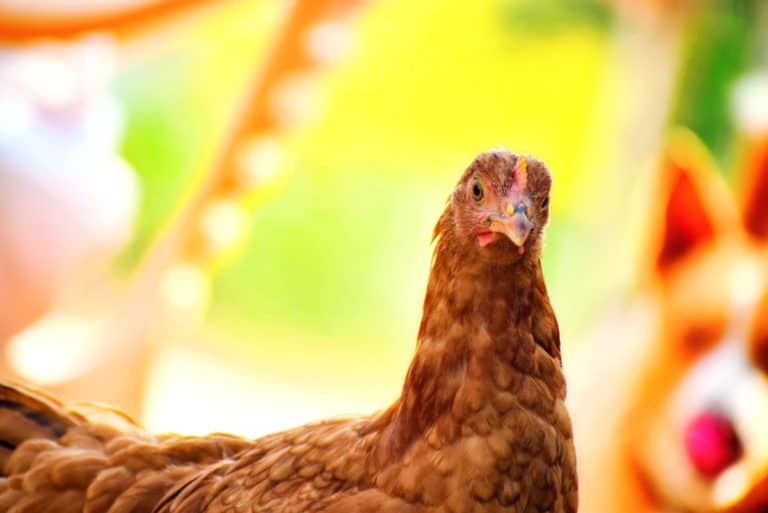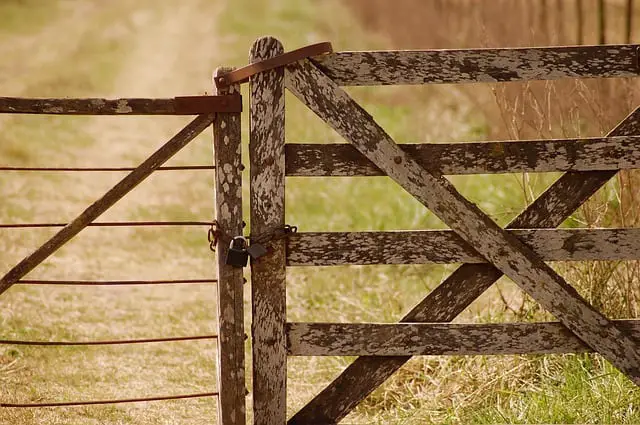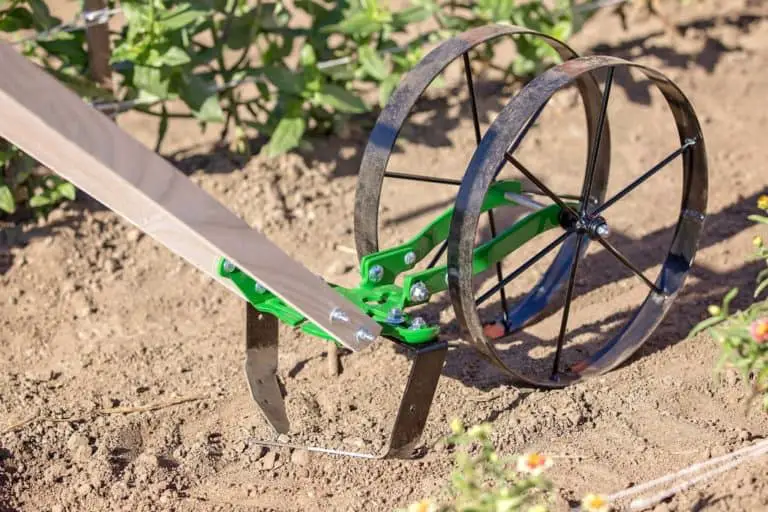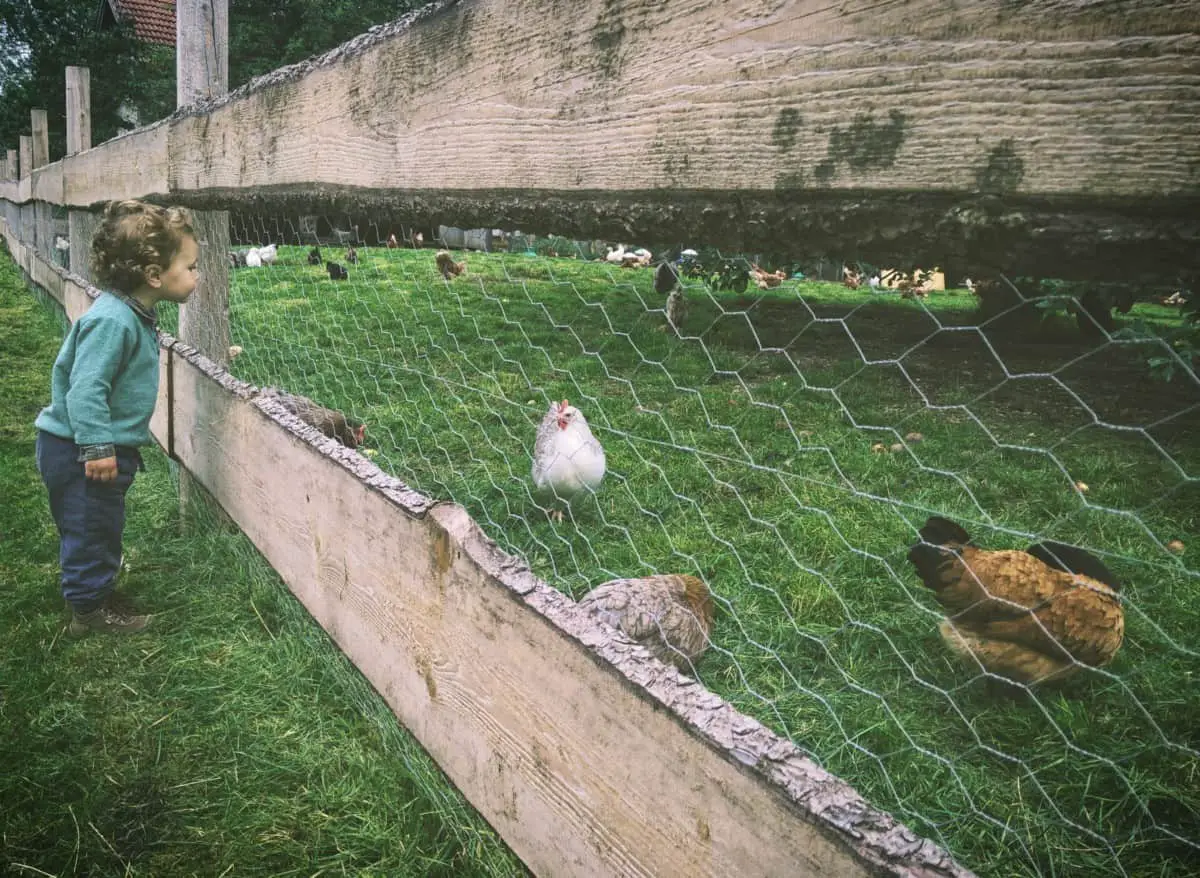
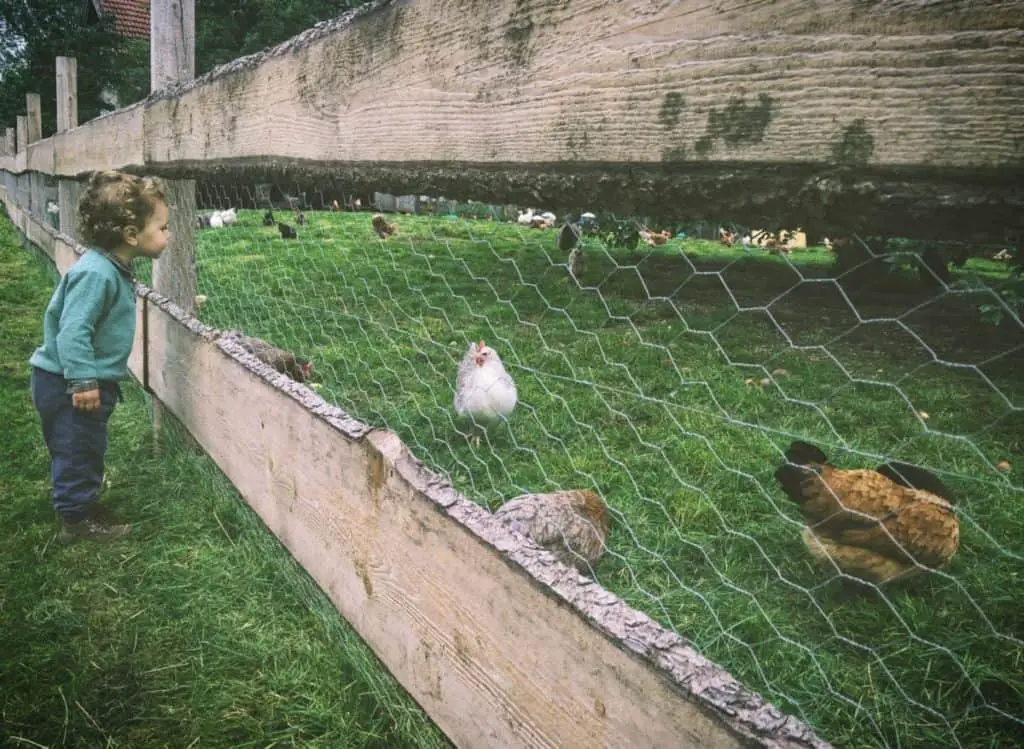
Caring for small livestock is both a privilege and a responsibility. If you are a chicken owner, there are some essential items you need to have in place that will ease your burden and make both you and your chickens happier. These are essential whether you have 100-Acres or a small backyard.
A responsible chicken owner will employ labor-saving equipment and processes, like automatic watering and feeding systems, and egg-handling procedures. These and other elements need not be expensive but can enhance the experience and safety of both chicken and owner.
This site contains affiliate links. If you make a purchase using one of these links, I may earn a commission. This compensation comes at no cost to the customer. Please click here for more information about cookies collected and our privacy policy.
Must Haves
Whether you are just beginning your experience raising chickens or have been raising them for years, here are some innovations that can make your life easier. An automatic coop door, an automatic watering system, and bulk feeder will take a lot of the guesswork, time and labor out of your chicken raising experience, and will enhance the security and productivity of your flock.
Also, the correct amount of space, a good nesting box, and clean bedding material are critical to the health of your birds. A healthy hen is an excellent laying machine. Give them what they “must-have” and they will reward you with delicious fresh eggs.
Bulk Feeder
A few Generations ago our grandmothers would walk out in the chicken yard and scatter corn or some other chicken feed from a bowl, or from her apron. Today, though it is nice to scatter treats from time to time and watch the chickens scurry around for them, our chickens should have feed out for them at all times. This is called “free choice”, and it makes for a happier chicken and a much better layer.
When chickens are well fed and healthy they will lay the optimum amount of eggs for you. And, that’s what most of us raise chickens for, the wonderful eggs they provide. If they are allowed to run out of food for an extended period of time egg production will suffer, unless they have plenty of room to run and can get their protein from worms and bugs. In that case, their egg production might remain constant.
To make sure that feed is out for your chickens “free choice” (at all times) you should consider a bulk feeder. There are various capacities of bulk feeders. Choose one that reflects the size of your flock. If you only have two or three chickens you could probably buy a 2 or 3-pound capacity bulk feeder. If you have a dozen chickens or more, you may want to consider a 7-pound capacity feeder.

At present, I have 9 hens and a rooster. I have a 7 lb feeder with laying pellets out for them at all times. I can fill the feeder up and be gone for a week and not have to worry about them running out of feed. So, for me, seven pounds of feed will last a dozen chickens several days.
Make sure you hang the feeder off the ground. You can also put it up on an elevated platform like bricks or a block. Getting it off the ground will keep them from wasting so much of it. Most bulk feeders will have a ring on the top which will allow it to be hung from a rafter, Etc. Make sure it is out of the weather, as rain will spoil the food if it gets wet.
Here at Amazon (my affiliate link) is the type of bulk feeder I use. Mine is well over 10-years old and has worked flawlessly for all these years. I prefer plastic feeders over galvanized. Galvanized can rust, and plastic is easier to keep clean.
Automatic Waterer
One of the most important things chickens need to remain healthy is a clean supply of water. this could be supplied by an Automatic Fount or Watering Nipples (associate links) that are supplied by a waterline. Or a standalone bucket-type waterer that is filled manually.
Here’s the way I do it. Most of the year, for the day-to-day operation, I use an automatic waterer that is hooked up to a water line. This is my favorite chicken waterer found at Amazon (my associate link). For me, that is the easiest, most hands-off method of making sure my chickens have clean water at all times.
However, in the cold winter when sub-freezing weather approaches I have to turn off my well and drain the waterlines, which cuts off the water source to the automatic waterer. At that point, I use the standalone bucket waterer like this one at Amazon (my affiliate link).
If we are going to be gone for a few days (no matter what time of year it is) I fill up the bucket waterer just in case something happens to my well, or the power goes out and disables my well. If that happened, my chickens could be out of water for an extended period of time, and that could be tragic. So for me, even though I use an automatic waterer, the bucket waterer is both a back-up plan and an insurance policy.
Nest Boxes Are Important
Nesting Boxes are an important part of raising chickens for eggs, so let’s dig into it. First of all, you don’t need a separate Nesting Box for every chicken. Most of the time they will wait to lay their egg till a box is unoccupied. A good rule of thumb is 1 nest box for every 4 hens you have.
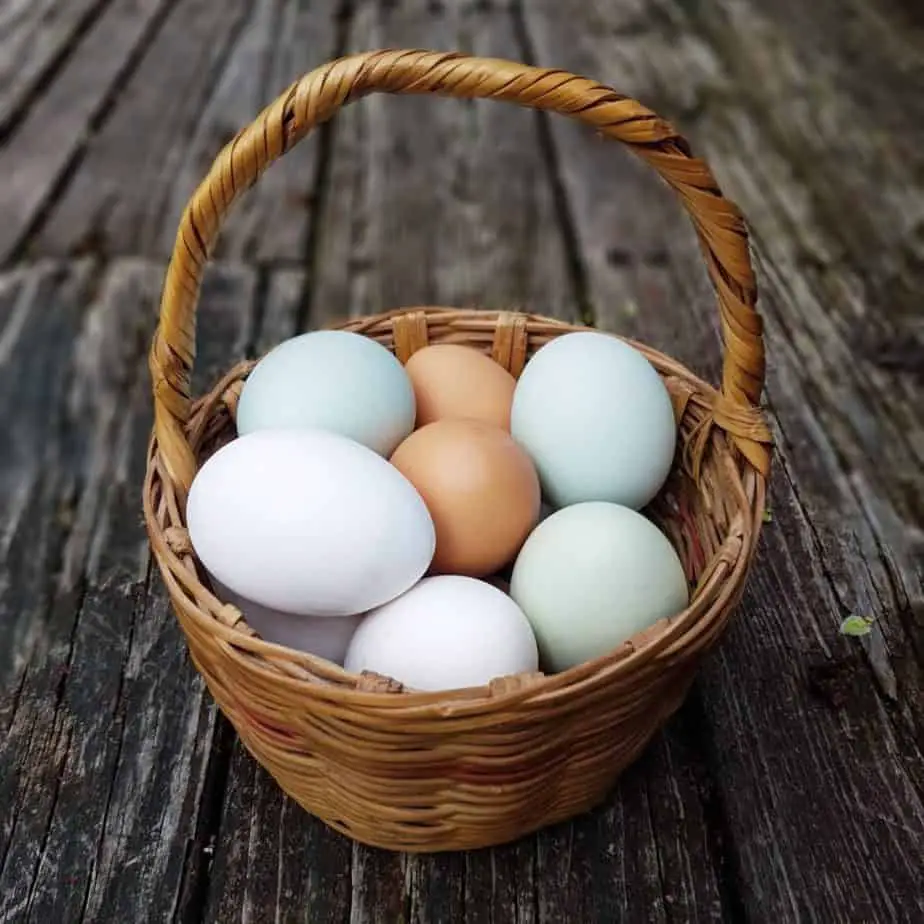
When your chickens are old enough to begin laying (about 16 weeks) they will need a place that they feel is private and secure for them to lay their eggs. Even though they usually cackle proudly and loudly when they lay an egg, they seem to enjoy a little privacy during the process.
For that reason, you will need to provide a nest box for them. I’ve seen nest boxes ranging from a homemade box made with framing and plywood, to boxes made from old milk crates filled with hay. There are also many types of commercial nest boxes on the market today. All of these will work, but there is one that will save you a lot of time and effort.
If you are new to chickens and therefore new to gathering eggs you may be unaware that chickens will foul (poop) their nest from time to time and in doing so will soil the eggs. Whether you are raising eggs for your own consumption or selling the eggs, they have to be cleaned. You can’t use an egg that has a clump of poop stuck to it. You will have to clean it and that takes time out of your day and is not a pleasant process.
That’s why I love the Roll-Away Nest box design. In the roll-away design, when the hen lays the egg, it gently rolls down an incline into a tray that the chicken can’t access. Therefore she has no opportunity to sit there (contemplating what she has just accomplished), and foul the egg. Or have another chicken come into the nest and foul the egg.
This happens more than you realize, and since the egg must be very clean if you are going to sell it, you will have to go through the process of scraping off the poop and wiping it clean.
Also, some hens have a tendency to peck their eggs in the nest box. I’m not sure why, but it is a common occurrence. Having the egg roll away from the chicken to an area she cannot access means she is usually unable to peck it. A hen that is an “egg-pecker” can ruin a lot of eggs. If you are selling the eggs, that can cost you a lot of money.

For that reason, I highly recommend a Roll Away Nest Box like these at Amazon (my affiliate link). They are a little pricey considering you could make your own nest box out of a 5-dollar milk crate, but for me, they are well worth it. I have had mine for several years now and it has made my life a lot easier. I very seldom have to clean poop from an egg now… very seldom.
With a Roll Away Nest Box, you won’t have to use any bedding. They have a plastic mat in them like AstroTurf that acts as the bedding. So, another reason to go “Roll Away” is you’ll never have to change the bedding in your nest boxes again!
Comfortable Roosting Space
Your chickens will need a place to roost. It is inherent in a chicken to elevate themselves off the ground at night to keep away from nocturnal ground predators. Chicken predator species are many and in just one night an entire flock can be devastated. I think you will find this article dealing with chicken predators helpful.
I like to have my chickens roost at night as high as they possibly can. That means they are only a foot or so from the ceiling of the chicken coop. Since heat rises I think that would also be helpful in colder climates to keep the chicken’s body heat close to the ceiling where it could trap the heat as it rises.
So a place for them to roost is a must-have. You can’t have your chickens sleeping on the ground. When they are young, that is probably where they will sleep because they are used to being in a brooder for the first several weeks of their lives, sleeping on the ground. But once they realize that they can roost at a higher level, they will begin to do so.
Some people say that they prefer a round pole-like roost to grab onto, and that may be true. However, I suspended a small pallet from the ceiling to act as a roost, and mine seem to love it, even though they are standing on flat boards and not round poles.
Here is a video that shows my Pallet Roost System
Since chickens do not fly that well so if you place it very high in the coop you will have to provide some sort of ladder system for them to get up to the roost. They will quickly adapt to the climbing process to get to their new sleeping quarters.
They Need Room
Overcrowding in a chicken pen is more than just uncomfortable for the chicken it is also not safe. Inside the circle of life in a chicken pen, there is a pecking order. That’s where the term “pecking order” comes from. The hierarchy within the flock will show their dominance by pecking those they consider “underlings”.
Sometimes this is savage enough to cause bleeding and can even cause death. One of the best ways to prevent this, or at least lessen these attacks, is to make sure they have plenty of room.
Most people say a chicken coop should provide 5 square feet of floor space per chicken.
That means if you have 10 chickens your coop should be 50 square feet. That’s only a 5- foot by 10-foot area, which seems very small to me for 10 chickens. In my opinion, that would be just the bare minimum, and if you can build a larger coop that will give them more than 5 square feet each, I think you will be rewarded by less fighting among the population.
Build your coop bigger than you think you might need because you may want to expand your flock later anyway. A coop larger than the minimum required gives you the option of adding more chickens at a later date.
A chicken “run” is the space outside the coop where the chickens are allowed to meander. Many say that a minimum of 15 square feet is needed in the chicken run. Again, if you can give your chickens more than that, your chickens will appreciate it. In this case, bigger is better. My chicken run is 14 ft by 150 ft, and I only have 10 Birds.
But you’ll have to do whatever you can with the space you have available to give to the chickens.
They will need space on the roost too. Don’t think they will just line up on the roost and play nice with each other. Nope, they will peck each other and jockey for position on the roost, and even knock the “bullied” hens off if they can. Make sure they have plenty of room, even on the roost.
If you’re unsure of how to build a chicken coop and are looking for some neat Chicken Coop Plans, I found the World’s Largest Collection of woodworking plans. There are 16,000 projects here including some amazing chicken coops and so much more. Anyone can find something to create. Even if you don’t have a lot of expensive tools, you can create some awesome projects just like a PRO. Take a look at the plans by clicking here. It’s one of the most amazing packets of material I’ve seen in a long time.
Also, I’ve got a Greenhouse design that can easily be converted to a Chicken Coop. In fact, I made a chicken coop using this design and so have dozens of other folks. You can take a closer look by following this link to my Greenhouse Page. Even if you don’t need a greenhouse, this could be just what you need to make a chicken coop or garden shed. Check it out.

Ventilation
My particular chicken coop does not need ventilation Because it is not a closed chicken house. Our winters here in East Texas are not severe enough to require us to have enclosed structures for the chickens to live in during the winter.
All we really need to do is make sure they are kept dry and out of the cold wind. For that reason, my chicken coop (actually it’s a chicken tractor) is enclosed on three sides with a roof, but one side is completely open with just chicken wire protection around it.
In colder climates, however, the chickens are completely enclosed at night and the door is shut. During the winter ventilation might not be needed, but in the summer, with no air stirring around, I’m sure a closed environment would become too hot for the chickens even at night. So some sort of ventilation might be needed, or at least a fan that stirs up the air.
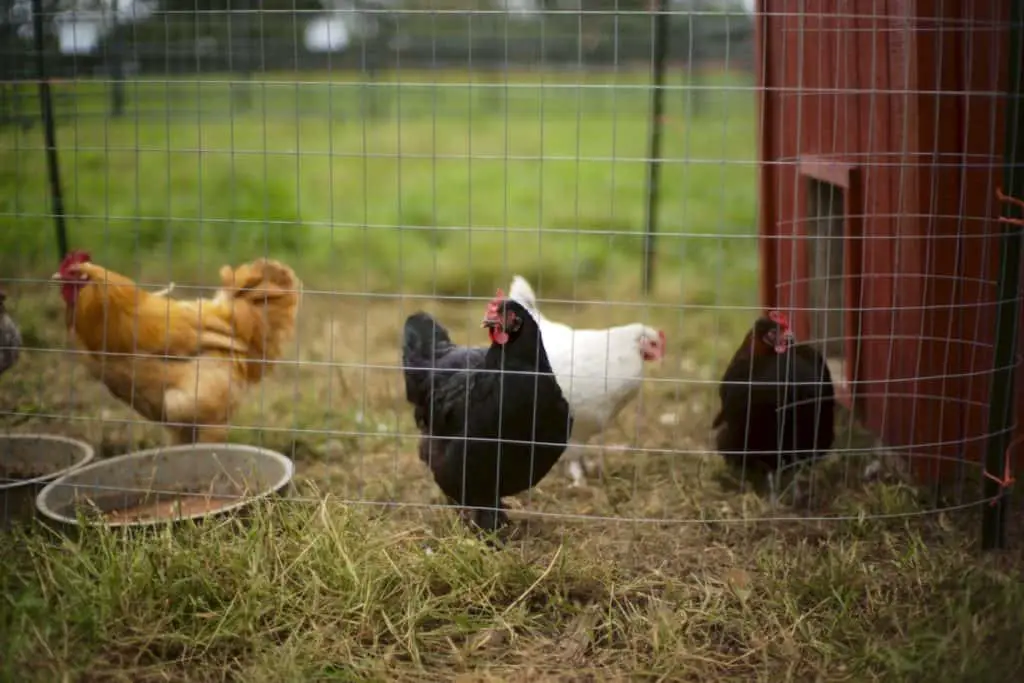
Again, I’m just guessing here because I don’t live in a cold climate. It can occasionally get well below freezing here. I remember a few years back it got down to right at Zero degrees here (which is very cold for us) and my rooster’s comb turned black on the ends from frostbite burns. All the chickens made it through the cold weather just fine but there was evidence of frostbite damage.
Bedding Material
Your chickens will need bedding material. This can be straw, wood chips, pine shavings, leaves, Etc. You will especially see the need for bedding underneath the roost. When they sleep at night they poop a lot. In fact, they poop all night long.
A healthy chicken coop should have several inches of bedding inside the coop. That will absorb the droppings and we’ll keep the chickens busy throughout the day scratching through it looking for bugs, dropped feed and other things.
Many practice what is called a deep bedding system. They will place several inches (maybe even a foot) of bedding material in a chicken coop and leave it for a longer time. The chickens will spread their fertilizer in it and they’re scratching action will turn it over and over again like you would a compost pile. This makes excellent compost and is a very healthy way to keep chickens.
Typically I use pine shavings. I buy them at the local feed store and pile them up in the chicken coop, even though my chickens have full access to a large chicken run. Twice a year (usually) I clean out the chicken coop and put the shavings/poop material in a compost pile. The fact that the shavings have a lot of manure in them allows them to deteriorate quickly and become rich chicken-manure compost.
Here is a video of me cleaning out and re-bedding my coop
Cleaning Access
You want to make the chicken coop accessible for cleaning. By that, I mean having a door large enough for you to enter into with a shovel and perhaps even a wheelbarrow. The more accessible you make the chicken coop the more likely you are to keep it clean.
For years my chicken coop had a very low roof on one end that made it hard to walk into, and for that reason, I was not as conscientious about cleaning it (taking out all the soiled bedding material) as I should have been. It was just a hassle to go in and out. So, make your coop accessible to the average-sized person, and make the door wide enough to accommodate your wheelbarrow.
Artificial Lighting Needed
In the winter months, egg production will usually slow down because the days are shorter. There is a direct correlation between the light a chicken receives every day and her egg production. For that reason, I and many other egg producers add artificial lighting during the winter months.
I have an article about how to get more eggs from your chickens. I’m sure you will find it helpful and you can find it here.
In the fall and winter, I usually put the light in their coop above their roost. That light is on a timer. It comes on about an hour before dusk and stays on about an hour after dark. It comes on again about an hour before daylight and turns off about an hour after daylight. This gives them a couple of extra hours every day of “sunlight” and will usually reward me with more winter eggs.
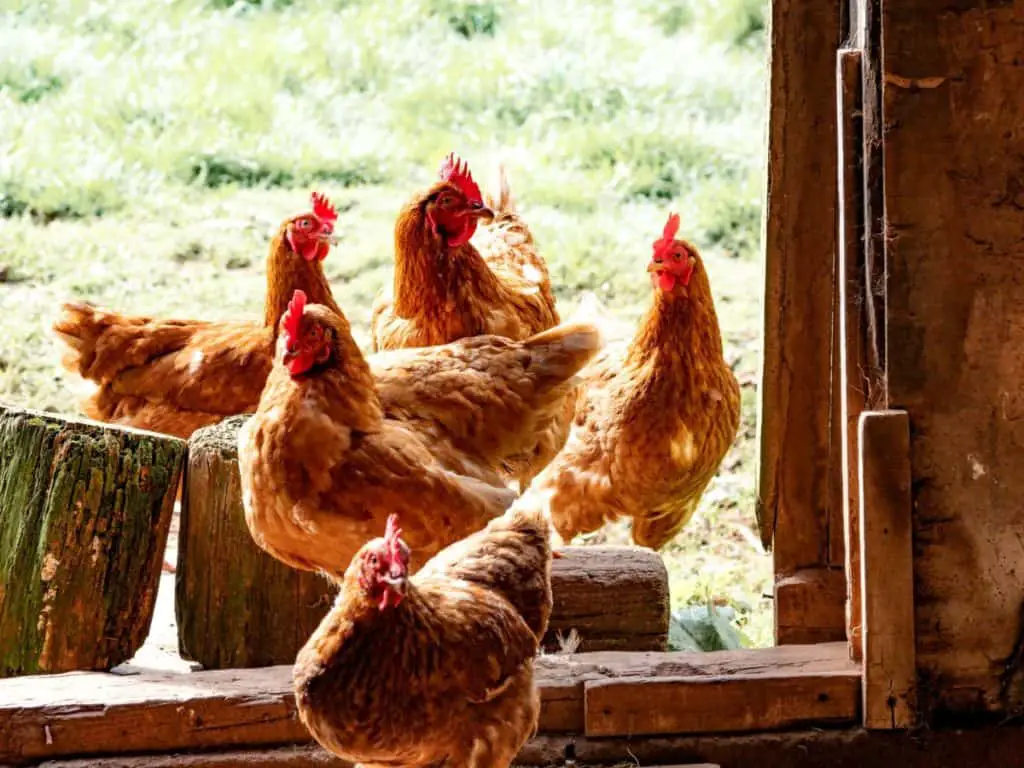
Maximum Security
Just about every omnivore or carnivore near you would love to have a nice chicken dinner at your expense. You will need to take steps to ensure that does not happen. So a must-have in your chicken coop would be security measures.
Make sure you buy heavy-duty chicken wire, or even better, hardware cloth. The heavier the wire the better as some animals will certainly try to test its effectiveness. I don’t consider an automatic door a must-have since I do not have one. But, if you have no other security devices in place, then you should strongly consider an automatic door for your chicken coop.
An “automatic door” is a door that opens in the morning to let them out, and then closes up tight at night to keep them secure. Here are some Automatic Doors at Amazon (my affiliate link). Understand that nighttime is the preferred time for predators to come for your chickens. Make sure you are prepared for their assault before you bring them home. Most chicken predators are nocturnal.
I don’t use an automatic door because I have other methods in place to protect my chickens at night such as a hot wire perimeter around their coop. I also use a little device called a Predator Guard that I believe to be very effective. Here is the Predator Guard at Amazon (affiliate link). You can find out about the security precautions I use (and recommend) in this article on how to stop chicken predators.
Related Questions
Are Chickens Happy In A Coop?
If you have provided the essential things: Water, Food, Nesting Box, Roost, Bedding material, and Security Elements, there is no reason your chickens would not be happy. By nature, chickens like to browse and scavenge. They would really love to be outside in the grass, catching bugs and scratching up worms, but if that is not possible, they can also be content in the good home you have given them.
Should My Chicken Run Be Covered?
You need not cover your chicken run unless there is a threat of aerial predators. There are three classes of chicken predators:
- Nocturnal Predators (skunk, opossum, raccoon)
- Daylight Ground Predator (wolf, dog, coyote, bear)
- Aerial Predator (hawk, eagle, owl)
(Owls are mostly nocturnal but would begin their attack from the air)
My YouTube Channel has over 800 Videos about raising backyard chickens and other livestock, gardening, fruit production and more. You can visit my Channel HERE.

